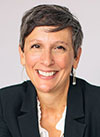
Many people, lawyers included, are viewing the coronavirus as an opportunity to examine their own well-being. For these lawyers, it’s a time to reflect and develop new habits for thriving. In contrast, others have said the pandemic is a time to “keep your head down, grind it out, work harder, because that’s what we do.” Typically, as lawyers, we are swept up in this latter thinking – it is part of our culture and business model. It’s no secret that compensation is tied to productivity. Money and recognition increase, but at what cost?
The ethos of a legal practice can fool many into thinking, “I’m already trained to handle constant stress. After all, I’m a lawyer.” You might believe that stress doesn’t have a lasting impact on work quality, brain function, the body, or relationships. However, humans are not designed to be in a constant state of fight or flight.1 But frankly, chronic stress is a major characteristic of our professional experience. As lawyers, we’re engaged in constant battle. Being a workaholic is a badge of honor.
Many of us are familiar with the 2017 American Bar Association commissioned report, “The Path to Lawyer Well-Being: Practical Recommendations for Positive Change” (ABA Report). Its survey of 13,000 practicing lawyers found that a staggering number qualified as problem drinkers. And there were equally concerning data about the percentage struggling with depression, anxiety, and stress. But many of us react to these statistics by saying, “that’s not me” or that this is a topic for those who just “can’t cut it.”
With the advent of COVID-19, we can assume the numbers reflected in the ABA Report are much higher. In fact, for the general population, recent data gathered by the U.S. Census Bureau show that clinical anxiety, depression, and other mental health conditions skyrocketed with a strong link to the pandemic.2 There’s more. The 2020 Update from the American Heart Association highlighted alarming statistics regarding obesity, diabetes, and heart disease, conditions that are well known to be associated with chronic stress:
-
46 percent of U.S. adults are estimated to have hypertension.
-
Approximately every 40 seconds, an American will have a heart attack.
-
On average, someone dies of a stroke approximately every 3.59 minutes.3
Despite the link of stress to chronic disease and other challenges, as lawyers we negotiate with ourselves and say, “I’ll take this risk right now because I want to get ahead.” Many of us are habituated to the high demands of the job and might not even realize we’re at risk. Conditions such as fatigue, heart palpitations, poor lab results, autoimmune disorders, digestive problems, strained relationships, malaise, or general anxiety might be ignored or tolerated if viewed as acceptable trade-offs for money, recognition, or career “stability.”
 Julie Bonasso, Temple 1995, is a consultant and coach specializing in lawyer well-being. An experienced corporate lawyer and Master Certified Coach, she helps clients reinvent their practices to achieve more balance and more profit. She is the founder and COO of RYP Global LLC.
Julie Bonasso, Temple 1995, is a consultant and coach specializing in lawyer well-being. An experienced corporate lawyer and Master Certified Coach, she helps clients reinvent their practices to achieve more balance and more profit. She is the founder and COO of RYP Global LLC.
If you’re experiencing signs related to constant stress, ask yourself, “What do I stand to lose if I don’t make a change?” or “What can I gain by making changes?” Provocative questions that address your motivation are often the first step to change.
To explore this, consider a powerful example about Chereé, an attorney whose life events led her to transform how she works and lives. (See sidebar.)
Getting Unstuck
How can we go about altering deeply ingrained habits to create lasting change? As anyone knows who has tried to lose weight, stop smoking, or quit caffeine, making healthy behavioral changes is difficult. The first step to Chereé’s success was being ready for change. James Prochaska and Carlo DiClemente, pioneers in the motivation for health behavior change, developed the transtheoretical model of change (TTM).4 Their model describes how people go through predictable stages in the change process.
Do any of these resonate with you?
-
Precontemplation (no plan to change because you don’t believe you have a problem)
-
Contemplation (you’re aware of the problem and seriously considering change)
-
Preparation (you’re actively planning to do something soon)
-
Action (you’re making changes)
-
Maintenance (you’re sustaining the new behavior)5
As a first step, consider where you might be as it relates to well-being. The evidence in our industry suggests that many lawyers appear to be in the precontemplation stage, that is, “no plan to change because there isn’t a problem.” Others are in the contemplation phase. This is where many get stuck: knowing it is time to make a change but unsure about how to proceed. Failure occurs because most people have not yet identified the galvanizing reason for change. Although fear is a powerful incentive, it is not sustainable.6 There must also be a strong desire to improve health and well-being.
Evocative Questions
An important driver in getting unstuck is identifying and understanding your motivation for change. One way to do this is through evocative questioning. The power of these questions, developed by two clinical psychologists, can help shift a person from precontemplation and contemplation stages to preparation and action.7
Reflect on the following:
-
What do I stand to lose if I don’t make a change?
-
What can I gain by making changes?
-
What is most important to me at this moment?
-
How do I want my life to be different one year from now?
Answers to these questions often change your perspective. If you find yourself faced with an inflection point, consider making the choice to thrive. The next step is to prepare, designing the life changes that work for you. How do you spend your time, money, and energy? Are you living in alignment with what matters to you most? If not, what needs to change? When you are satisfied with your plan, take bold action.
Remember, you don’t need a major life event or wake-up call like Chereé’s to seize the life you want. It can be just one moment when you decide, “I want my life to be different.” Maybe you are pausing to reflect right now. What choice will you make?
A New Way of Thinking (and Being): Chereé’s Story
In 2018, Chereé was a high-powered deputy general counsel at a major Fortune 1000 company. She rose quickly through the ranks and traveled abroad regularly. In one year, she was in Moscow and throughout Europe half a dozen times. She led an international team of legal professionals and mentored close to 25 people at all levels of the organization at any given time. She did all of this while juggling the demands of professional and family responsibilities.
In early 2018, Chereé was experiencing chest pain off and on for several months. She went to her doctor, who told her she was the picture of health – low blood pressure, physically fit, exercised regularly, and closely monitored her diet. One day, she woke up not feeling well and having the same chest pain again. She collapsed. Her husband insisted she go to the doctor. She refused. She rationalized and negotiated with him. She had a “career-changing, game-changing” presentation later in the day and couldn’t miss it. She told her husband she would go to the doctor after her presentation. Her husband ignored her protests and called 911 immediately. At age 43, Chereé suffered a heart attack. She was later diagnosed with a rare form of heart disease.
Chereé’s life circumstances presented her with a choice point, which caused her to pause and reflect. The first thing she did was decide, “I want my life to be intentional. I’m going to do something about this.” She created a plan and took action. She reassessed her values and re-prioritized her life. She put herself first, her family second, and her work third. To help with accountability and sustainability, she ensured her calendar reflected her priorities. For example, she scheduled recovery periods by taking a day or half-day off throughout the month for whatever she needed or desired. Once per quarter, she planned a few days away, by herself. These recovery periods ranked at the same level as her meetings. Her husband was, and still is, her biggest supporter. She delegated more to her children. She hired a personal trainer and outsourced the cooking and cleaning. She got comfortable with saying “no” and setting boundaries when a choice did not align with her values.
Chereé leveraged this life-changing event to create a pathway for leadership and success without sacrificing well-being. She is still in the same position with the same demands and responsibilities. But she is thriving professionally and personally. Today, Chereé has created an environment where she finds professional advancement, balance, resilience, contentment, and yes, a great income.
Meet Our Contributors
How did you find your way to your current position?
 What most people know about me is that I built a successful career as a corporate lawyer. What most people don’t know about me is that I felt trapped. Every Sunday night, I had a pit in my stomach, dreading work the next day. I was unfulfilled and burned out. With my physical and mental health suffering, I feared being stigmatized and judged by others, so I stayed silent.
What most people know about me is that I built a successful career as a corporate lawyer. What most people don’t know about me is that I felt trapped. Every Sunday night, I had a pit in my stomach, dreading work the next day. I was unfulfilled and burned out. With my physical and mental health suffering, I feared being stigmatized and judged by others, so I stayed silent.
While working as a legal recruiter, my eyes were opened to the widespread problem of lawyer burnout and the negative impact on well-being. The majority of lawyers I vetted were unhappy, unhealthy, and seeking a change. Many applied for a position thinking a new job would solve their problems. What they didn’t realize was that first they needed to uncover what they desired for themselves. Then the new job or career transition could follow. It was then that I made it my mission to start serving one lawyer at a time.
My passion to help others thrive led me to pursue my life’s purpose – helping lawyers improve their well-being without compromising their income, status, or identity.
Julie Bonasso, RYP Global LLC.
Become a contributor! Are you working on an interesting case? Have a practice tip to share? There are several ways to contribute to Wisconsin Lawyer. To discuss a topic idea, contact Managing Editor Karlé Lester at (800) 444-9404, ext. 6127, or email klester@wisbar.org. Check out our writing and submission guidelines.
Endnotes
1 Cleveland Clinic Health Essentials, What Happens to Your Body During the Fight or Flight Response? Cleveland Clinic, Dec. 9, 2019.
2 Alyssa Fowers & William Wan, A Third of Americans Now Show Signs of Clinical Anxiety or Depression, Census Bureau Finds Amid Coronavirus Pandemic, Washington Post, May 26, 2020.
3 American Heart Ass’n, Heart Disease and Stroke Statistics–2020 Update, (last visited July 30, 2020).
4 James O. Prochaska et al., Changing for Good (HarperCollins, 1994).
5 Id. See also James O. Prochaska et al., In Search of How People Change: Applications to the Addictive Behaviors, Am. Psychol., vol. 47, no. 9, 1992, pp. 1102-14.
6 Joshua Kraus, 4 Motivators for Productivity and the Science Behind Them, Zapier, Aug. 9, 2018.
7 William R. Miller & Stephen Rollnick, Motivational Interviewing: Helping People Change (Guilford Press, 3d ed. 2013).
